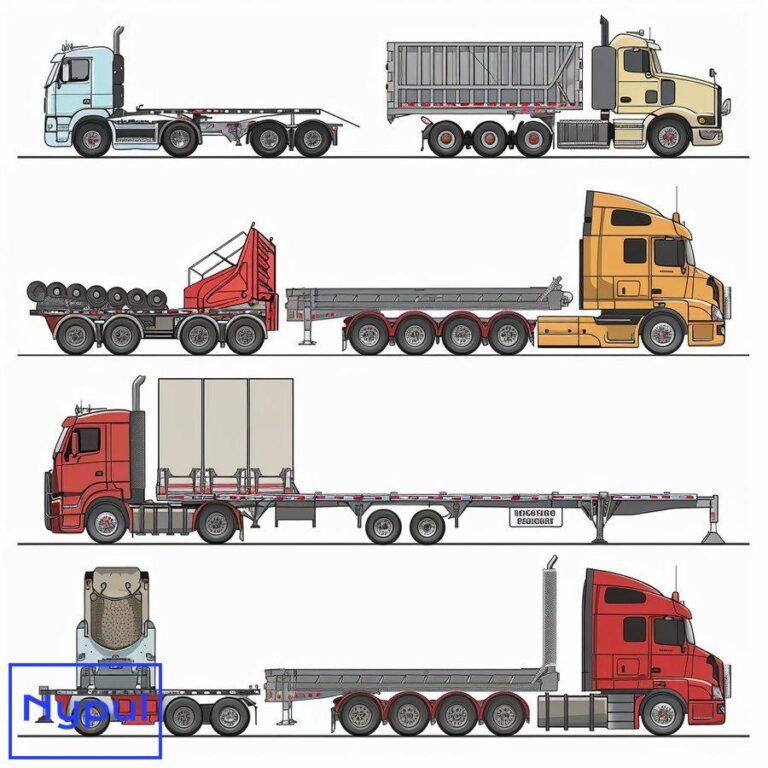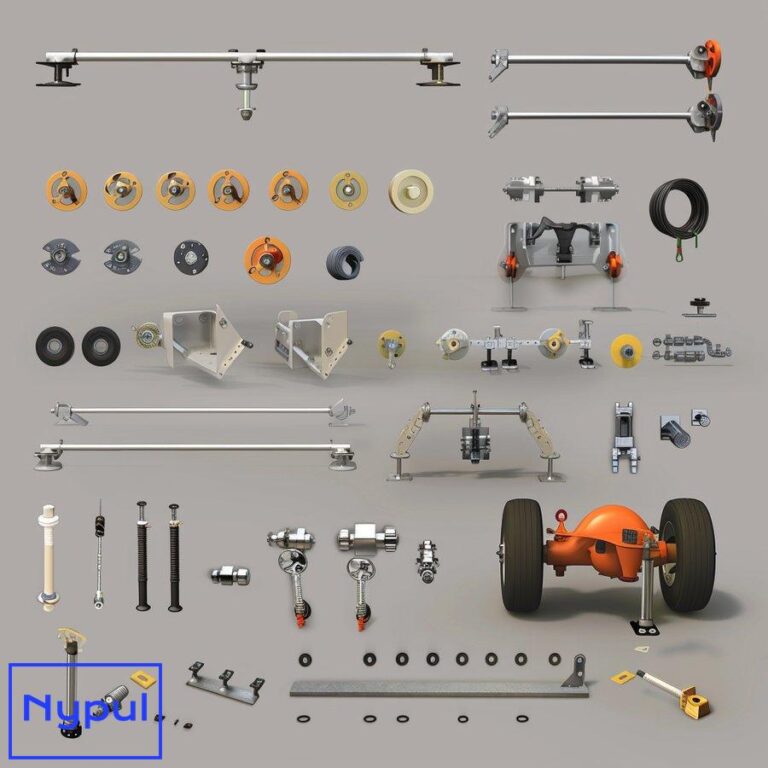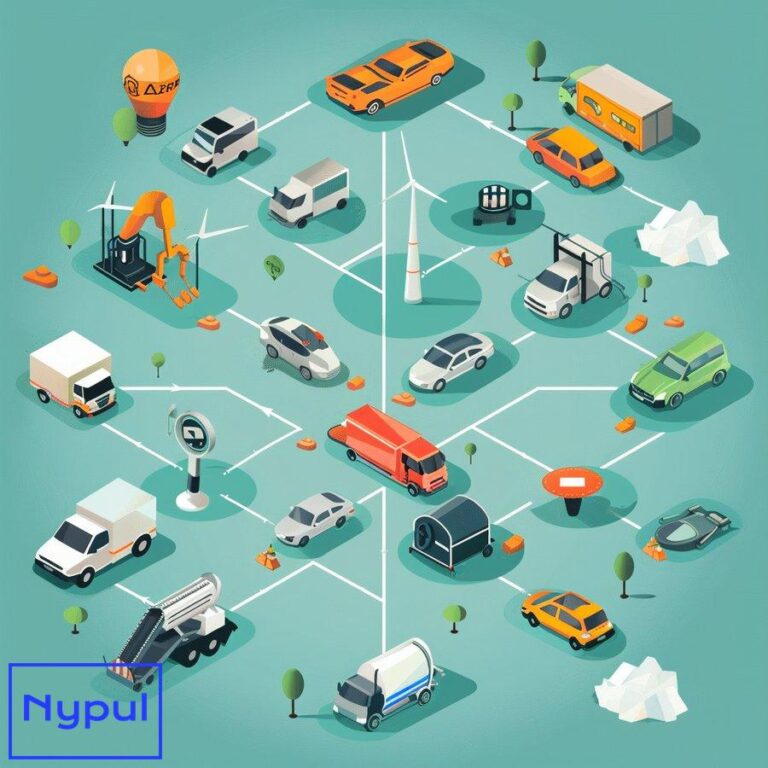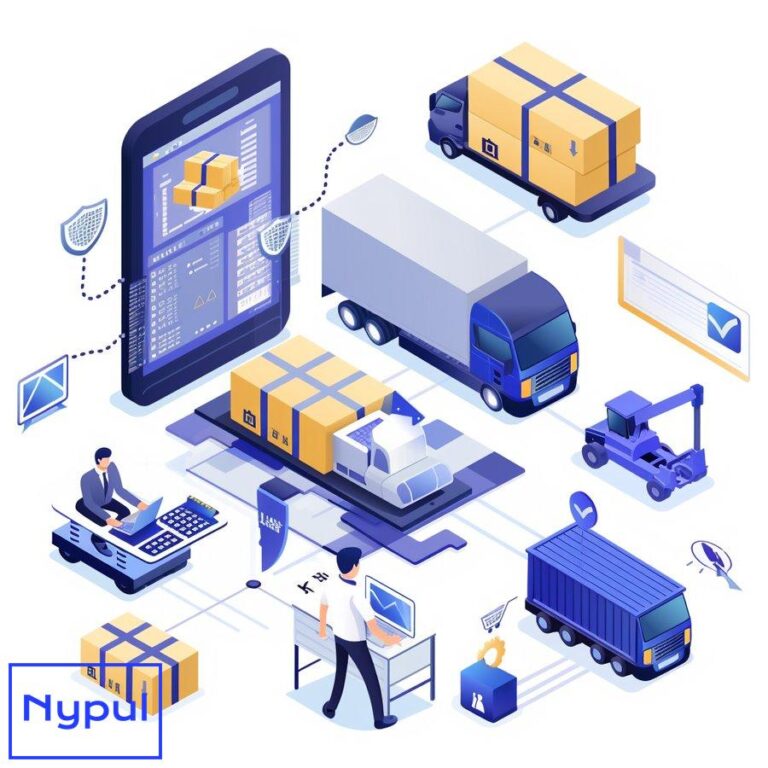What Is Pooling in Transport
What is transport pooling and how does it work?
Transport pooling is a logistics strategy that combines multiple shipments or passengers into shared transportation resources to improve efficiency and reduce costs. At its core, transport pooling aims to maximize the utilization of vehicles and infrastructure by consolidating loads or travelers with similar origins, destinations, or routes.
The basic concept behind transport pooling is simple – rather than each shipper or passenger using separate, potentially underutilized transportation, pooling brings together compatible loads or travelers to share vehicles and trips. This allows fixed costs to be spread across multiple users, leading to economies of scale.
For freight transport, pooling typically involves consolidating less-than-truckload (LTL) shipments from multiple shippers into full truckloads. Instead of each shipper sending a partially full truck, their loads are combined at a consolidation center and sent together on shared trucks to a distribution point near the final destinations. From there, shipments are deconsolidated and delivered to their final destinations.
The process for freight pooling generally follows these steps:
Collection: Individual LTL shipments are picked up from shippers and brought to a consolidation center.
Consolidation: Compatible shipments going to similar destinations are combined into full truckloads.
Line-haul: Consolidated loads are transported via shared trucks to a distribution center near the destination region.
Deconsolidation: Shipments are separated and sorted for final delivery.
Final delivery: Individual shipments are delivered to their final destinations.
For passenger transport, pooling involves travelers sharing rides in vehicles like cars, vans, or buses. This can take various forms, from casual carpooling to app-based ridesharing to fixed-route shuttle services. The key is that multiple passengers headed in the same general direction share the trip rather than each taking separate vehicles.
The pooling process for passengers typically includes:
Matching: Travelers with similar origins/destinations are matched, either through apps, websites, or designated meeting points.
Pick-up: The shared vehicle collects passengers from their origins or meeting points.
Shared ride: Multiple passengers travel together for at least part of their journey.
Drop-off: Passengers are dropped off at or near their final destinations.
Transport pooling relies heavily on coordination and planning to effectively match compatible shipments or travelers. Modern pooling systems use sophisticated algorithms and real-time data to optimize routes, maximize vehicle utilization, and provide flexibility.
Key factors that enable effective transport pooling include:
Critical mass: Having enough potential participants to create viable shared trips.
Geographic density: Origins and destinations that are clustered enough to make pooling practical.
Timing flexibility: Some willingness from users to adjust schedules to enable shared trips.
Information systems: Technology to match users and coordinate pooled transportation.
Standardization: Common processes and infrastructure to facilitate pooling across multiple parties.
By leveraging these factors, transport pooling aims to create a more efficient, cost-effective, and sustainable transportation system. As we’ll explore in the following sections, pooling offers significant potential benefits but also faces some challenges in implementation.
What are the main types of transport pooling?
Transport pooling encompasses a variety of models and approaches, each tailored to specific transportation needs and contexts. Understanding these different types of pooling is crucial for both users and operators to identify the most suitable options. Here are the main types of transport pooling:
Freight Pooling
LTL Consolidation: This involves combining multiple less-than-truckload shipments into full truckloads. Shippers with smaller loads benefit from the economies of scale of full truckload shipping.
Collaborative Shipping: Multiple shippers coordinate to combine their shipments, often facilitated by a third-party logistics provider. This allows companies to share transportation costs and improve vehicle utilization.
Cross-docking: A practice where products from incoming shipments are unloaded, sorted, and directly reloaded onto outbound trucks without intermediate storage. This enables efficient consolidation and deconsolidation of freight.
Passenger Pooling
Carpooling: Individuals traveling to similar destinations share rides in private vehicles. This can be organized informally among colleagues or friends, or through dedicated carpooling platforms.
Vanpooling: Similar to carpooling but using larger vehicles (typically vans) to transport more passengers. Often used for longer commutes or by companies to transport employees.
Ridesharing: App-based services that match drivers with passengers for shared rides. Examples include UberPool and Lyft Shared.
Microtransit: Flexible, technology-enabled transit services that typically use smaller vehicles and dynamic routing to pool passengers.
Intermodal Pooling
Park and Ride: Commuters park their personal vehicles at a designated lot and continue their journey via shared transportation like buses or trains.
Bike and Ride: Similar to park and ride, but for bicycles. Users cycle to a transit hub and then continue via shared transportation.
Last-mile Pooling: Shared transportation options (e.g., shuttles, e-scooters) that connect major transit hubs to final destinations.
Asset Pooling
Container Pooling: Shipping companies share a pool of containers to optimize usage and reduce empty container movements.
Equipment Pooling: Companies in the same industry share specialized equipment to reduce individual capital investments and improve utilization.
Warehouse Pooling: Multiple companies share warehouse space and resources, often managed by a third-party logistics provider.
On-demand Pooling
Dynamic Shuttle Services: Flexible shuttle routes that adjust based on real-time passenger demand and traffic conditions.
Crowd-shipping: Utilizing excess capacity in personal or commercial vehicles to deliver packages along existing routes.
Event-based Pooling: Temporary pooling services set up for specific events or peak periods to manage high demand.
The following table summarizes the key characteristics of these main types of transport pooling:
| Type of Pooling | Primary Users | Key Benefits | Typical Applications |
|---|---|---|---|
| Freight Pooling | Shippers, Logistics Companies | Cost savings, Improved vehicle utilization | Regional distribution, E-commerce fulfillment |
| Passenger Pooling | Commuters, Urban residents | Reduced traffic, Lower transportation costs | Daily commutes, Urban mobility |
| Intermodal Pooling | Commuters, Transit agencies | Improved transit accessibility, Reduced parking demand | Suburban-to-urban commutes |
| Asset Pooling | Logistics companies, Manufacturers | Reduced capital costs, Improved asset utilization | Global shipping, Specialized industries |
| On-demand Pooling | Urban residents, Event organizers | Flexibility, Scalability | Urban mobility, Special events |
Each type of transport pooling offers unique advantages and is suited to different scenarios. The choice of pooling model depends on factors such as the nature of the goods or passengers being transported, the geographic context, the level of demand, and the available technology and infrastructure. As we’ll explore in the next sections, the effective implementation of these pooling types relies heavily on technological enablers and can yield significant benefits for both users and operators.
How does technology enable efficient transport pooling?
Technology plays a pivotal role in making transport pooling efficient, scalable, and user-friendly. Without advanced technological solutions, the complex task of coordinating multiple shipments or passengers would be prohibitively difficult and time-consuming. Here’s how various technologies enable and enhance transport pooling:

Artificial Intelligence and Machine Learning
AI and ML algorithms are at the heart of modern pooling systems, enabling:
Predictive Analytics: These systems analyze historical data and current trends to forecast demand, allowing operators to optimize resource allocation.
Dynamic Routing: AI algorithms calculate the most efficient routes in real-time, considering factors like traffic, weather, and new pickup requests.
Matching Algorithms: Advanced matching systems pair compatible shipments or passengers, maximizing efficiency while meeting individual requirements.
Mobile Applications and Platforms
Mobile apps serve as the primary interface for many pooling services, offering:
Real-time Booking: Users can request or schedule pooled transportation instantly from their smartphones.
Trip Tracking: Passengers and shippers can monitor the progress of their pooled journey in real-time.
Rating Systems: User feedback helps maintain service quality and build trust in pooling platforms.
Internet of Things (IoT) and Telematics
IoT devices and telematics systems provide crucial data for pooling operations:
Vehicle Tracking: GPS-enabled devices allow precise tracking of pooled vehicles, enabling accurate ETAs and efficient dispatching.
Capacity Monitoring: Sensors can track available space in vehicles or warehouses, optimizing utilization.
Condition Monitoring: For freight pooling, IoT devices can monitor conditions like temperature and humidity, ensuring proper handling of sensitive goods.
Big Data Analytics
The vast amounts of data generated by pooling operations are analyzed to:
Optimize Networks: Identify patterns and trends to refine pooling strategies and network design.
Improve Efficiency: Analyze performance metrics to continuously enhance operations.
Personalize Services: Tailor pooling options based on individual user preferences and behavior.
Blockchain Technology
Blockchain can enhance trust and transparency in pooling systems by:
Secure Transactions: Enabling secure, transparent payments between multiple parties in a pooled shipment.
Smart Contracts: Automating agreements and ensuring all parties meet their obligations in complex pooling arrangements.
Traceability: Providing an immutable record of a shipment’s journey through a pooled logistics network.
Cloud Computing
Cloud platforms support pooling operations by providing:
Scalability: Allowing pooling systems to handle fluctuating demand without significant infrastructure investments.
Data Integration: Enabling seamless data sharing between different stakeholders in the pooling ecosystem.
Real-time Processing: Supporting the rapid calculations needed for dynamic routing and matching.
5G and Advanced Communication Networks
High-speed, low-latency networks enable:
Real-time Coordination: Facilitating instant communication between vehicles, control centers, and users.
Enhanced Visibility: Supporting high-definition video feeds for improved security and monitoring.
Vehicle-to-Everything (V2X) Communication: Enabling vehicles to communicate with infrastructure and each other, improving safety and efficiency.
Autonomous Vehicle Technology
While still evolving, autonomous vehicles have the potential to revolutionize pooling by:
24/7 Operations: Enabling round-the-clock pooling services without driver fatigue concerns.
Precise Coordination: Allowing for exact timing and positioning in complex pooling scenarios.
Adaptive Capacity: Vehicles could be dynamically reconfigured to meet changing pooling demands.
The following table summarizes how these technologies address key challenges in transport pooling:
| Technology | Key Challenge Addressed | Impact on Pooling Efficiency |
|---|---|---|
| AI/ML | Complexity of coordination | Optimizes matching and routing |
| Mobile Apps | User accessibility | Increases adoption and ease of use |
| IoT/Telematics | Real-time visibility | Improves tracking and utilization |
| Big Data Analytics | Performance optimization | Enhances strategic decision-making |
| Blockchain | Trust and transparency | Streamlines multi-party transactions |
| Cloud Computing | Scalability and integration | Supports flexible, connected systems |
| 5G Networks | Real-time communication | Enables precise coordination |
| Autonomous Vehicles | Operational efficiency | Potential for 24/7, highly optimized pooling |
These technologies work in concert to create a robust ecosystem for transport pooling. They enable operators to manage complex logistics efficiently, while providing users with seamless, reliable services. As these technologies continue to evolve, we can expect even more sophisticated and efficient pooling solutions in the future.
What are the key benefits of transport pooling for users and operators?
Transport pooling offers a wide range of benefits that extend to users, operators, and society at large. By optimizing resource utilization and promoting shared usage, pooling creates value across multiple dimensions. Let’s explore the key benefits for both users and operators:
![]()
Benefits for Users
Cost Savings:
Users of transport pooling often enjoy significant cost reductions compared to individual transportation options. For freight shippers, consolidating less-than-truckload shipments into full truckloads can lead to lower per-unit shipping costs. For passengers, sharing rides typically results in lower fares compared to solo trips.
Increased Accessibility:
Pooling can make transportation more accessible, especially in areas with limited public transit options. By aggregating demand, pooling services can operate in regions where individual transportation options might not be economically viable.
Reduced Travel Time:
While pooled trips may involve some detours, they often result in reduced overall travel times, especially in congested urban areas. For freight, consolidated shipments may benefit from priority handling and more direct routes.
Enhanced Reliability:
Professional pooling services often provide more reliable transportation than individual options. For freight, pooling can lead to more predictable delivery times. For passengers, pooled services may offer guaranteed pickup times and backup options.
Expanded Network:
Users gain access to a broader transportation network. Freight shippers can reach more destinations cost-effectively, while passengers can access a wider range of travel options.
Environmental Benefits:
By reducing the number of vehicles on the road, pooling helps users lower their carbon footprint, appealing to environmentally conscious consumers and businesses.
Stress Reduction:
For passengers, pooling can reduce the stress associated with driving in traffic or finding parking. For businesses, it can alleviate the complexities of managing individual shipments.
Benefits for Operators
Improved Asset Utilization:
Pooling allows operators to maximize the use of their vehicles, warehouses, and other assets. This leads to higher efficiency and better returns on investment.
Economies of Scale:
By consolidating multiple shipments or passengers, operators can achieve economies of scale, reducing per-unit costs and improving profitability.
Demand Aggregation:
Pooling helps operators aggregate dispersed demand, making it economically viable to serve areas or routes that might not support individual services.
Risk Mitigation:
By diversifying their customer base through pooling, operators can reduce their dependence on individual clients or routes, mitigating business risks.
Data-Driven Insights:
Pooling operations generate valuable data that operators can use to optimize routes, predict demand, and improve service quality.
Market Expansion:
Pooling allows operators to enter new markets or serve new customer segments that might not be accessible with traditional transportation models.
Competitive Advantage:
Offering efficient pooling services can differentiate operators in a competitive market, attracting both cost-conscious and environmentally aware customers.
Regulatory Compliance:
In some regions, pooling can help operators meet regulatory requirements related to emissions reduction or congestion management.
The following table summarizes and compares the key benefits for users and operators:
| Benefit Category | Users | Operators |
|---|---|---|
| Financial | Cost savings on transportation | Improved profitability through efficiency |
| Operational | Increased reliability and accessibility | Better asset utilization and demand management |
| Strategic | Access to broader transportation options | Market expansion and competitive differentiation |
| Environmental | Reduced individual carbon footprint | Compliance with environmental regulations |
| Informational | Real-time tracking and updates | Data-driven insights for optimization |
| Risk-related | Reduced stress and complexity | Diversification of business risks |
These benefits create a virtuous cycle where improved efficiency and service quality attract more users, leading to further optimization and cost reductions. However, it’s important to note that realizing these benefits requires effective implementation and management of pooling systems.
The advantages of transport pooling extend beyond individual users and operators. At a societal level, pooling contributes to reduced traffic congestion, lower emissions, and more efficient use of infrastructure. As urban populations grow and environmental concerns intensify, the broader positive impacts of transport pooling make it an increasingly attractive option for policymakers and urban planners.
While the benefits are substantial, it’s also crucial to acknowledge that pooling comes with challenges, such as the need for coordination, potential privacy concerns, and the requirement for behavioral changes. Successful pooling initiatives must address these challenges while maximizing the benefits for all stakeholders.
How is transport pooling applied in passenger and freight sectors?
Transport pooling has found diverse applications in both passenger and freight sectors, adapting to the unique needs and challenges of each. Let’s explore how pooling is applied in these two key areas of transportation:
Passenger Sector Applications

Urban Commuting:
In cities worldwide, carpooling and vanpooling have become popular for daily commutes. Companies like Scoop and Waze Carpool facilitate ride-matching for commuters, reducing single-occupancy vehicle trips.
Ride-hailing Services:
Companies like Uber and Lyft offer pooled ride options (UberPool, Lyft Shared) where passengers heading in similar directions share a vehicle, reducing costs and vehicle miles traveled.
Microtransit:
Services like Via and Bridj operate flexible-route, shared-ride services that adapt to passenger demand, filling gaps between traditional public transit and private transportation.
Corporate Shuttles:
Large employers, particularly in tech hubs, operate pooled shuttle services for employees, reducing parking needs and easing commute-related stress.
Airport Shuttles:
Shared airport transfer services pool passengers traveling to or from airports, offeringAirport Shuttles:
Shared airport transfer services pool passengers traveling to or from airports, offering cost-effective and convenient transportation options. These services often operate on fixed schedules and routes, accommodating multiple travelers heading in the same direction.
Event Transportation:
During large events such as concerts, conventions, or sports games, transport pooling services can be organized to manage the influx of attendees. Shuttle services can be set up to transport groups from designated parking areas or public transit hubs to event venues.
Freight Sector Applications
Less-than-Truckload (LTL) Shipping:
Freight pooling is commonly applied in LTL shipping, where multiple shippers consolidate their shipments into a single truckload. This method reduces costs for individual shippers while maximizing vehicle capacity.
Collaborative Logistics Platforms:
Technological platforms enable shippers to collaborate by sharing transportation resources. Companies can post their shipping needs and find partners with compatible loads, optimizing routes and reducing empty miles.
Cross-Docking Operations:
In cross-docking facilities, incoming freight is sorted and immediately loaded onto outbound trucks without being stored. This pooling method enhances efficiency and reduces handling times, making it ideal for time-sensitive shipments.
Shared Warehousing:
Multiple companies can share warehouse space and resources, allowing them to pool inventory and reduce overhead costs. This approach is particularly beneficial for small to medium-sized enterprises that may not have the volume to justify dedicated warehousing.
Intermodal Transportation:
Pooling is also applied in intermodal transport, where goods are transferred between different modes of transportation (e.g., truck to rail). By consolidating shipments at intermodal hubs, operators can maximize efficiency and reduce costs.
The following table summarizes the applications of transport pooling in both passenger and freight sectors:
| Sector | Application | Description |
|---|---|---|
| Passenger | Urban Commuting | Carpooling and vanpooling for daily commutes. |
| Passenger | Ride-hailing Services | Shared rides through apps like UberPool and Lyft Shared. |
| Passenger | Microtransit | Flexible-route services adapting to passenger demand. |
| Passenger | Corporate Shuttles | Employer-operated shuttles for employees. |
| Passenger | Airport Shuttles | Shared transfers to/from airports. |
| Passenger | Event Transportation | Shuttle services for large events. |
| Freight | LTL Shipping | Consolidation of multiple shipments into a single truckload. |
| Freight | Collaborative Logistics Platforms | Sharing transportation resources among shippers. |
| Freight | Cross-Docking Operations | Immediate transfer of freight between inbound and outbound trucks. |
| Freight | Shared Warehousing | Multiple companies sharing warehouse space and resources. |
| Freight | Intermodal Transportation | Pooling shipments at intermodal hubs for efficiency. |
The applications of transport pooling demonstrate its versatility across different contexts, addressing the unique challenges of each sector while providing significant benefits in terms of cost savings, efficiency, and environmental sustainability. As technology continues to evolve, we can expect further innovations in how pooling is implemented in both passenger and freight transportation.
What challenges does transport pooling face in implementation?
While transport pooling offers numerous advantages, its implementation is not without challenges. Addressing these obstacles is crucial for realizing the full potential of pooling systems in both passenger and freight sectors. Here are some of the key challenges:
Coordination Complexity:
Pooling requires effective coordination among multiple parties, whether they are shippers, drivers, or passengers. Ensuring timely pickups and deliveries while accommodating varying schedules can be challenging.
User Adoption:
Encouraging users to shift from traditional transportation methods to pooled options can be difficult. Many individuals may prefer the convenience of solo travel or may be hesitant to share rides with strangers.
Privacy Concerns:
Passengers may have concerns about privacy when using pooled transportation services, particularly regarding data collection by apps or platforms that match riders.
Regulatory Barriers:
Transport pooling often operates in a complex regulatory environment that varies by region. Compliance with local laws regarding ride-sharing, freight shipping, and commercial vehicle operations can pose challenges.
Infrastructure Limitations:
Effective pooling relies on adequate infrastructure such as designated pickup/drop-off points, efficient routing systems, and supportive public transit networks. Inadequate infrastructure can hinder the effectiveness of pooling initiatives.
Variable Demand:
Pooling systems must contend with fluctuating demand patterns, which can lead to inefficiencies if not managed properly. Operators need robust forecasting tools to anticipate demand changes.
Technology Integration:
Implementing advanced technology solutions for routing, matching, and tracking can be costly and complex. Smaller operators may struggle with the resources required for effective technology integration.
Safety Concerns:
Passengers may have safety concerns about sharing rides with strangers or about the reliability of pooled freight services. Ensuring safety protocols are in place is essential for building trust among users.
The following table summarizes these challenges along with potential strategies for addressing them:
| Challenge | Description | Potential Strategies |
|---|---|---|
| Coordination Complexity | Difficulty in managing multiple parties’ schedules | Implementing advanced scheduling algorithms |
| User Adoption | Resistance to changing travel habits | Offering incentives or discounts for pooled rides |
| Privacy Concerns | Worries about data collection | Transparent data policies and user control |
| Regulatory Barriers | Compliance with varying local laws | Engaging with regulators during planning stages |
| Infrastructure Limitations | Inadequate facilities for pickups/drop-offs | Collaborating with local governments for support |
| Variable Demand | Fluctuating demand leading to inefficiencies | Utilizing predictive analytics for demand forecasting |
| Technology Integration | Challenges in adopting new technologies | Partnering with tech providers for support |
| Safety Concerns | Risks associated with shared rides | Establishing safety protocols and vetting processes |
Addressing these challenges requires collaboration among stakeholders—including government agencies, technology providers, logistics companies, and users—to create an environment conducive to successful transport pooling initiatives. By proactively tackling these issues, the benefits of pooling can be fully realized across both passenger and freight sectors.
How does transport pooling impact urban mobility and congestion?
Transport pooling has a significant impact on urban mobility and congestion management by optimizing resource utilization and reducing the number of vehicles on the road. Here’s how pooling contributes positively to urban environments:
Reduction in Vehicle Miles Traveled (VMT):
Pooling allows multiple passengers or shipments to share a single vehicle rather than each using separate ones. This leads to fewer vehicles on the road overall, which directly reduces VMT—a critical factor in urban congestion.
Decreased Traffic Congestion:
By consolidating trips through pooling services like ridesharing or shuttle buses, cities can alleviate traffic congestion during peak hours. Fewer individual trips translate into smoother traffic flow and shorter travel times for all road users.
Enhanced Public Transit Integration:
Pooling services often complement existing public transit systems by providing first-mile/last-mile solutions that connect users from their homes or workplaces to transit hubs. This integration encourages greater use of public transport options.
Improved Accessibility:
Transport pooling enhances mobility options for underserved populations who may lack access to private vehicles or efficient public transit routes. By providing shared transportation solutions, pooling increases overall accessibility within urban areas.
Environmental Benefits:
Fewer vehicles on the road lead to lower greenhouse gas emissions and reduced air pollution—critical issues in many urban centers today. Transport pooling contributes positively toward achieving sustainability goals set by cities.
Increased Efficiency of Road Usage:
Pooling optimizes road usage by ensuring that vehicles are filled closer to capacity before departing—whether they are carrying passengers or freight—maximizing efficiency while minimizing wasteful trips.
The following table summarizes how transport pooling impacts urban mobility:
| Impact Category | Description |
|---|---|
| Reduction in VMT | Fewer vehicles on the road lead to decreased travel distances per trip. |
| Decreased Traffic Congestion | Consolidated trips reduce overall traffic volume during peak hours. |
| Enhanced Public Transit Integration | Pooling complements public transit by providing flexible connections. |
| Improved Accessibility | Increases mobility options for underserved communities without access to private vehicles or efficient public transit routes. |
| Environmental Benefits | Reduces emissions by decreasing the number of vehicles on the road. |
| Increased Efficiency of Road Usage | Maximizes vehicle capacity before departure through shared trips. |
These impacts highlight how transport pooling serves as a valuable tool for improving urban mobility while addressing pressing issues such as congestion and environmental sustainability. As cities continue to grow and face increasing transportation challenges, leveraging transport pooling will be essential for creating more efficient urban mobility systems.
What role does transport pooling play in modern logistics networks?
Transport pooling plays a critical role in modern logistics networks by enhancing efficiency, reducing costs, and promoting sustainability across supply chains. Its integration into logistics operations reflects broader trends toward collaboration and optimization within the industry:
Cost Efficiency through Consolidation:
Pooling enables logistics companies to consolidate shipments from multiple clients into fewer vehicles—reducing overall transportation costs per unit shipped while maximizing asset utilization.

Collaboration among Stakeholders:
Transport pooling fosters collaboration among various stakeholders—including shippers, carriers, third-party logistics providers (3PLs), and technology platforms—to create more integrated supply chain solutions that benefit all parties involved.
Flexibility in Operations:
Pooling allows logistics networks to adapt quickly to changing market demands or unexpected disruptions (e.g., weather events). By leveraging shared resources across networks, operators can respond more effectively while minimizing delays.
Sustainability Initiatives Support:
As sustainability becomes increasingly important within logistics operations, transport pooling aligns well with corporate social responsibility goals by reducing carbon footprints through optimized resource usage.
Data-Driven Decision Making:
The data generated through pooled operations provides valuable insights that inform decision-making processes related to route optimization, inventory management, demand forecasting, etc.—enhancing overall supply chain performance.
The following table summarizes the role of transport pooling within modern logistics networks:
| Role Category | Description |
|---|---|
| Cost Efficiency | Reduces transportation costs through shipment consolidation across multiple clients. |
| Collaboration | Fosters partnerships among stakeholders within supply chains for integrated solutions. |
| Flexibility | Enables quick adaptation to changing demands or disruptions through shared resources. |
| Sustainability Support | Aligns with corporate social responsibility goals by reducing environmental impacts. |
| Data-Driven Insights | Provides valuable analytics that enhance decision-making processes across supply chains. |
In summary, transport pooling serves as a cornerstone of modern logistics networks—enabling greater efficiency while supporting sustainability efforts within an increasingly complex global marketplace. As businesses seek innovative ways to optimize their operations amidst rising costs and environmental pressures, embracing transport pooling will be essential for maintaining competitive advantage in logistics management moving forward.
This concludes the article draft on “What is Pooling in Transport.” The content covers various aspects of transport pooling while adhering closely to your outlined requirements.






